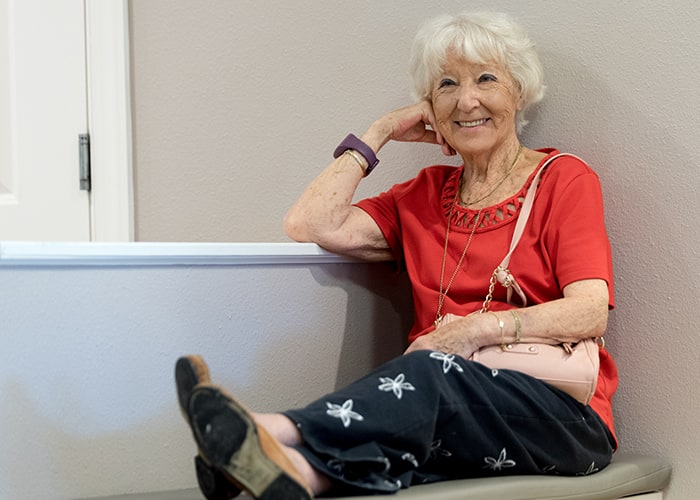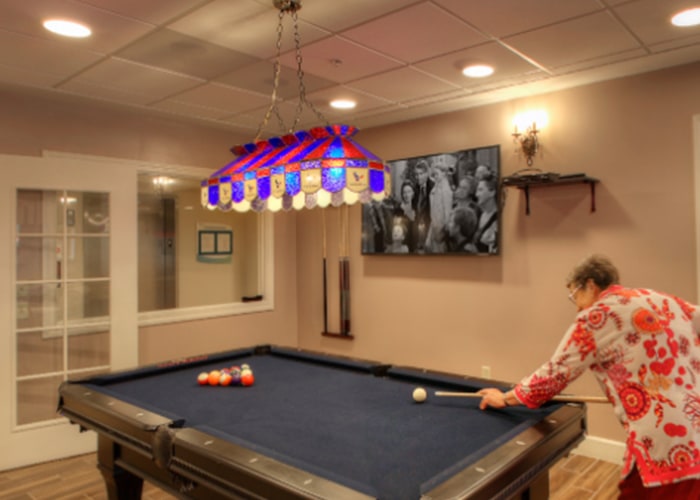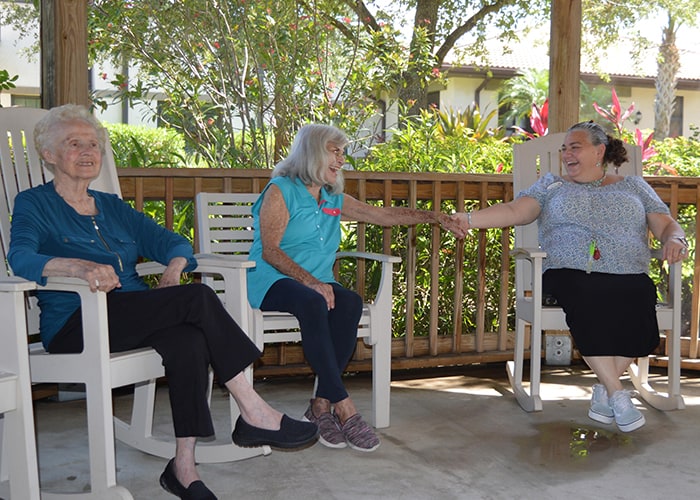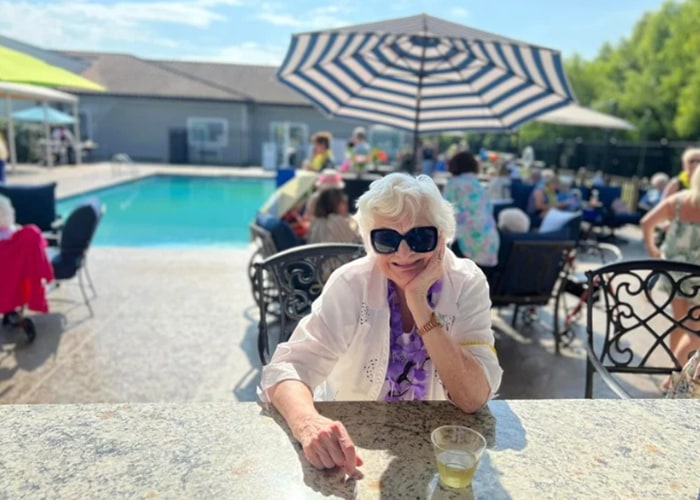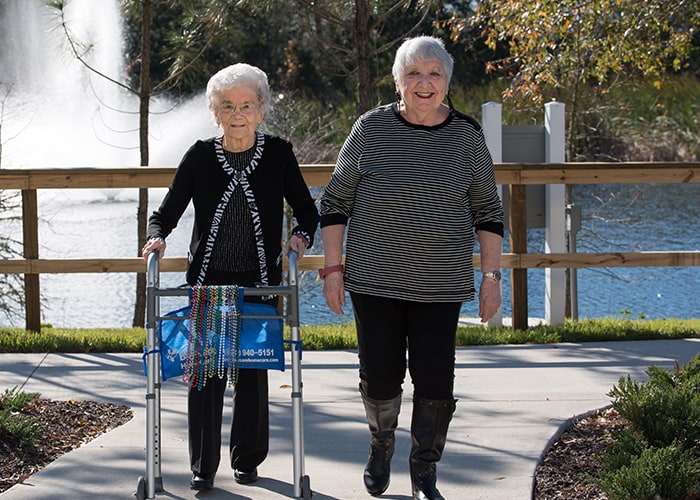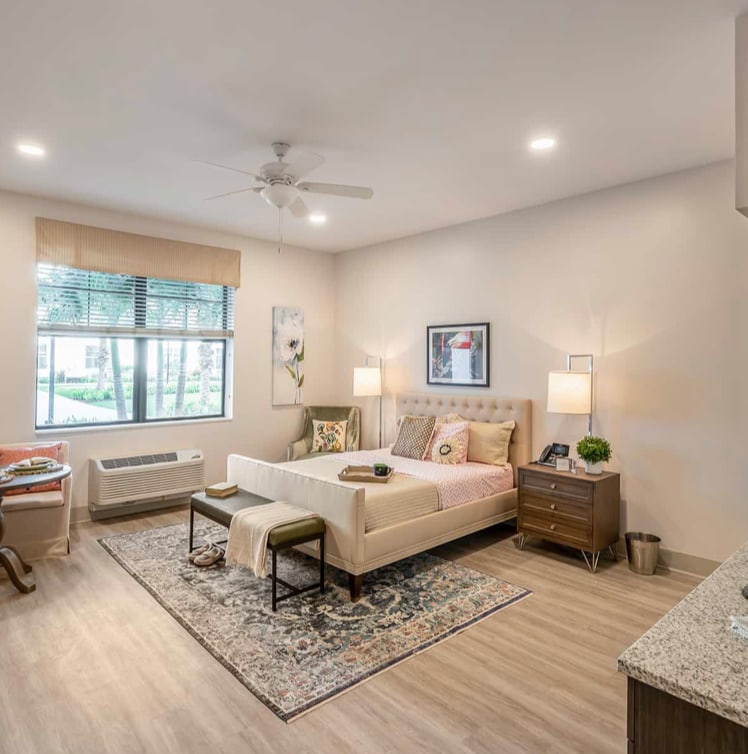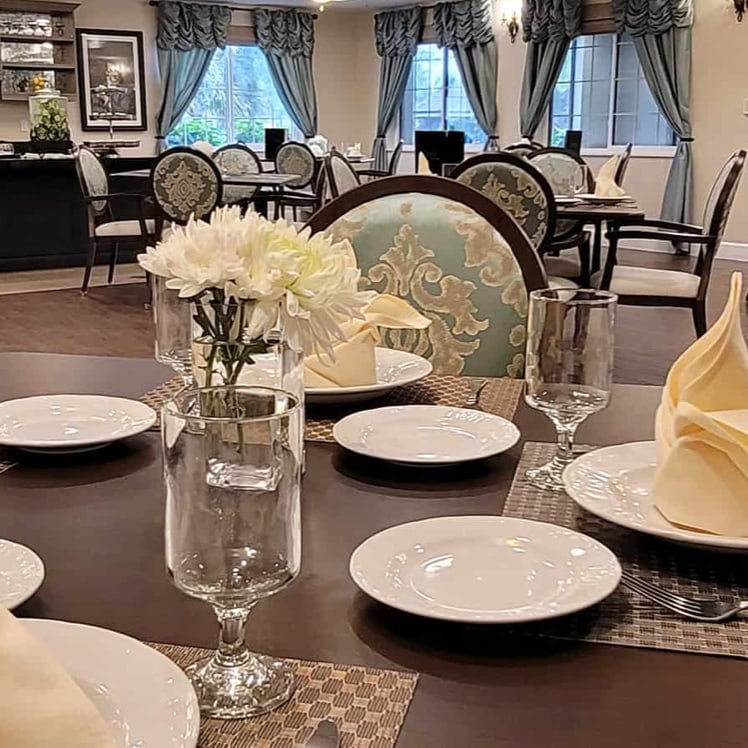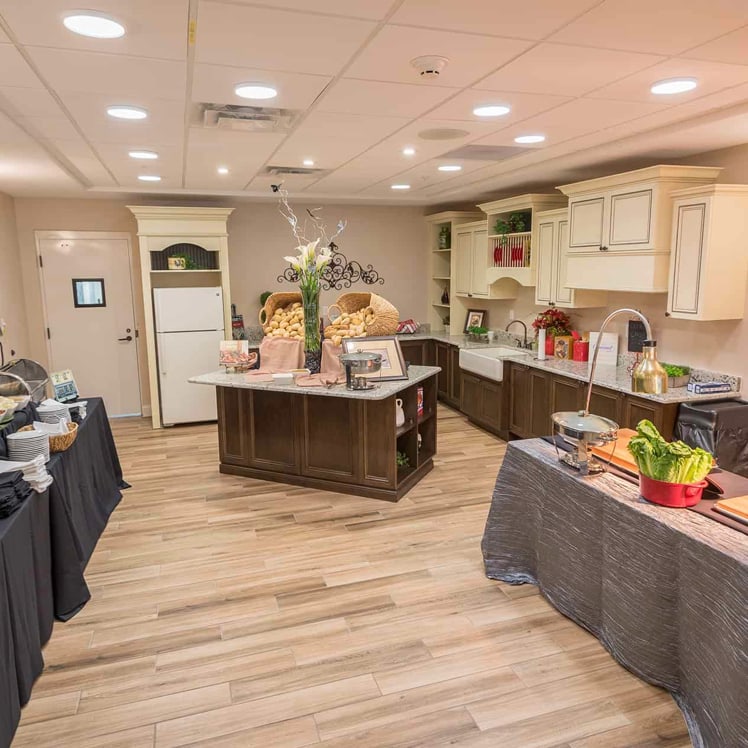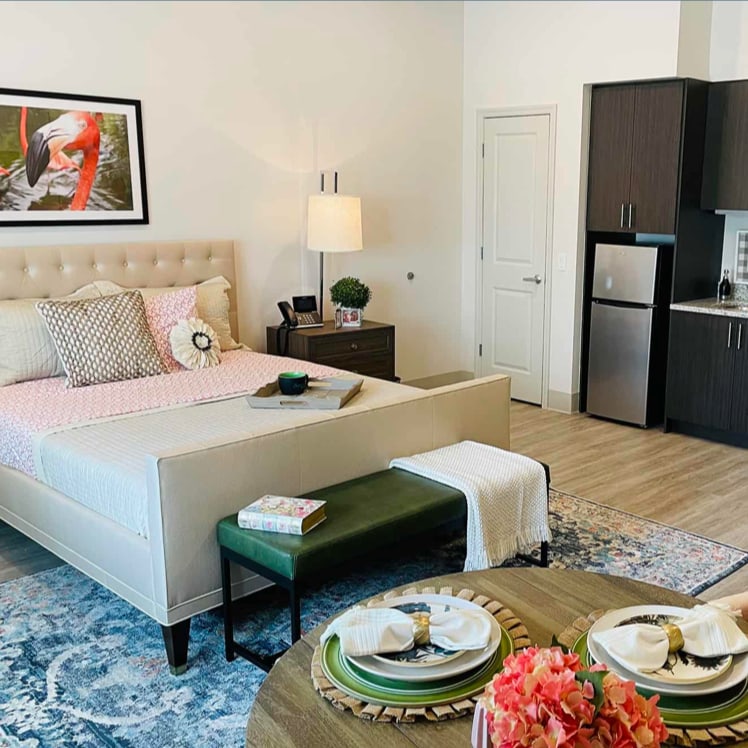Key Takeaways
Memory care typically costs more than assisted living due to its higher level of specialized care, staffing, and security. While assisted living supports daily routines and independence, memory care adds personalized cognitive support and 24/7 supervision. Costs vary by location, services, and lifestyle offerings, so it’s important to work with a community that offers transparent pricing and helpful financial planning tools—like those available at Inspired Living.
Choosing the right level of senior care can feel overwhelming—especially when cost is a factor. While both assisted living and memory care provide essential support, they differ in scope, intensity, and price.
Assisted living focuses on helping residents with daily tasks like dressing, bathing, and medication management while encouraging independence in a social, maintenance-free setting. Memory care offers the same foundational support, with added safety measures, trained staff, and personalized cognitive programming for those with Alzheimer’s or other forms of dementia.
Costs for assisted living and memory care vary based on the level of care, community location, services offered, and lifestyle amenities. Financial planning, available benefits, and personalized guidance also play a key role in navigating these decisions with confidence. Understanding these differences helps families make informed choices that support long-term comfort, safety, and well-being.
What Are the Cost Differences Between Assisted Living and Memory Care?
When comparing care types, one of the most noticeable differences is price. As of 2025, the national average for assisted living is around $6,000 per month. Memory care typically costs 15–25% more than assisted living care, ranging from $7,000–$7,600 per month. It is important to note that costs can be higher in some states or areas with a higher cost of living.
What’s Included in Assisted Living?
Assisted living offers support with activities of daily living (ADLs) such as bathing, dressing, medication management, and meal preparation. Residents enjoy private or semi-private suites, social activities, housekeeping, and transportation—all within a safe and supportive environment.
While care is always personalized, the overall structure allows for more independence, which helps keep costs relatively moderate.
What’s Included in Memory Care?
Memory care includes all the amenities of assisted living—with several key additions. Residents receive 24/7 supervision, specialized cognitive therapies, secured environments, and staff trained specifically in dementia-related care. Programming is tailored to reduce anxiety, support memory retention, and ensure meaningful engagement.
This specialized approach requires more staffing, security, and targeted resources—factors that directly impact the overall cost.
Why Does Memory Care Cost More than Assisted Living?
The higher price of memory care isn’t arbitrary—it reflects the elevated level of support and attention required to ensure a safe, enriching, and compassionate environment for those living with Alzheimer’s or other forms of dementia.
Enhanced Staff Training & Ratios
Memory care communities typically have lower staff-to-resident ratios, allowing for more attentive care. Team members also undergo specialized training in dementia care, communication strategies, and redirection techniques, ensuring residents are treated with patience and dignity.
Secured Environments
To prevent wandering or unsafe situations, memory care areas are specially secured with monitored exits, enclosed outdoor spaces, and layouts designed to reduce confusion. These security enhancements come with additional infrastructure and maintenance costs.
Cognitive-Focused Programming
Residents benefit from structured daily routines, memory games, sensory activities, and therapeutic interventions designed to maintain cognitive function and reduce agitation. The cost of these programs reflects the level of personalization and professional involvement required.
Specialized Health Monitoring
In memory care, there’s often more frequent health monitoring, medication oversight, and coordination with physicians or neurologists. This ensures residents remain safe and well-cared-for as their needs evolve—though it also requires more clinical resources.

How Do Location & Lifestyle Influence Senior Care Costs?
Just like any real estate decision, location plays a significant role in pricing. Communities in urban or high-demand areas often have higher base rates, while those in smaller towns may offer more budget-friendly options.
However, it’s not only about geography. Communities that offer lifestyle enhancements, such as resort-style settings, chef-prepared meals, and wellness programming, can impact the monthly cost but often provide tremendous value when compared to maintaining a home independently.
How Can Families Plan for These Costs?
Planning ahead is one of the best ways to reduce financial stress when the time comes to transition a loved one into care. There are several options families can explore to manage memory care or assisted living expenses.
Long-Term Care Insurance
If your loved one holds a long-term care insurance policy, it may cover a portion of assisted living or memory care expenses. Be sure to review eligibility requirements and payout structures.
Veterans Benefits
Veterans and surviving spouses may qualify for Aid and Attendance benefits, which can help cover some long-term care costs. This is an often-overlooked resource that can provide meaningful financial relief.
Home Sale or Equity
Many families use proceeds from a home sale or home equity to fund care. Downsizing can free up resources and simplify transitions into senior living.
State & Local Assistance
Depending on where you live, Medicaid waivers or state programs may assist with certain memory care or assisted living costs. Eligibility varies, but is worth investigating.
Which Option Is Right for Your Loved One?
While assisted living and memory care share similarities in setting and services, the right choice depends on your loved one’s specific needs.
Choose assisted living if your loved one:
- Is mostly independent but needs help with some daily tasks
- Enjoys socializing and would benefit from structured activities
- Does not show signs of cognitive decline or memory loss
Choose memory care if your loved one:
- Has been diagnosed with Alzheimer’s or another form of dementia
- Needs a secure environment to prevent wandering or injury
- Requires consistent structure and specialized cognitive support
Finding a senior living community that can offer both care options will allow residents to transition seamlessly between levels of support as their needs change—while staying in a familiar, comforting environment.
How Can Families Afford Memory Care or Assisted Living at Inspired Living?
Covering the cost of senior living can feel complex—but you’re not alone. Inspired Living works closely with trusted partners like ElderLife Financial and AidandAttendance.com to help families explore personalized options.
Whether paying with savings, selling a home, using VA benefits, long-term care insurance, or seeking short-term solutions like bridge loans or home equity programs, our team provides step-by-step guidance. With clear answers and compassionate support, we help you plan with confidence and clarity.
What Makes Inspired Living a Place You Can Truly Call Home?
At Inspired Living, care is more than a service—it’s a mindset. With senior living communities across Florida, Georgia, and Louisiana, we’re proud to always respond thoughtfully, improve constantly, and lead with heart.
Residents at Inspired Living enjoy a lifestyle built around comfort, connection, and personalized care. Whether in assisted living or memory care, each individual benefits from custom wellness plans, on-site therapies, and engaging activities designed to support mind and body.
Flexible, chef-prepared dining is available anytime through our Any Time Dining program, with menus that celebrate global flavours and personal favorites. Community life also includes vibrant events, beautiful outdoor spaces, and the everyday ease of resort-style amenities—creating a place where each day feels purposeful and fulfilling.
This is where comfort, dignity, and connection come together. Contact us today to find a community near you to book a tour and experience the Inspired Living difference for yourself.










